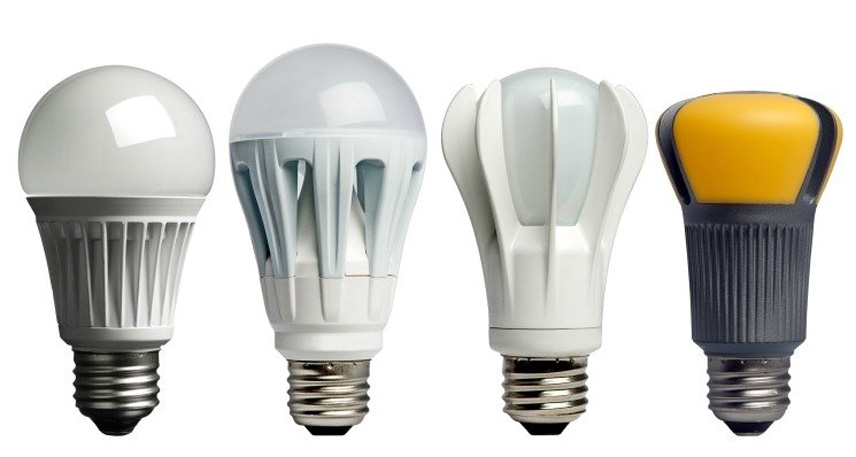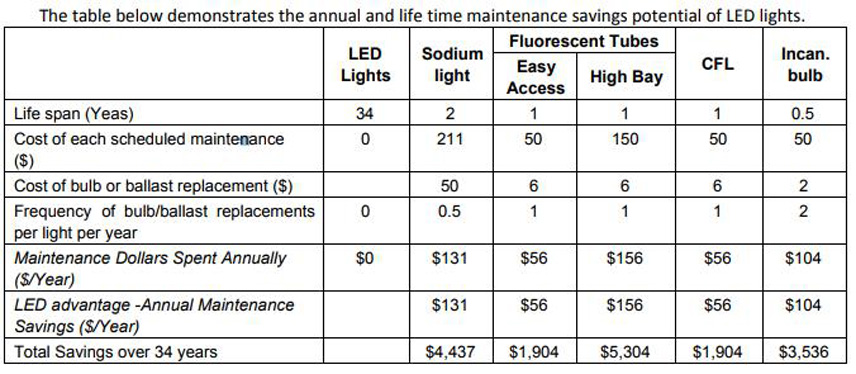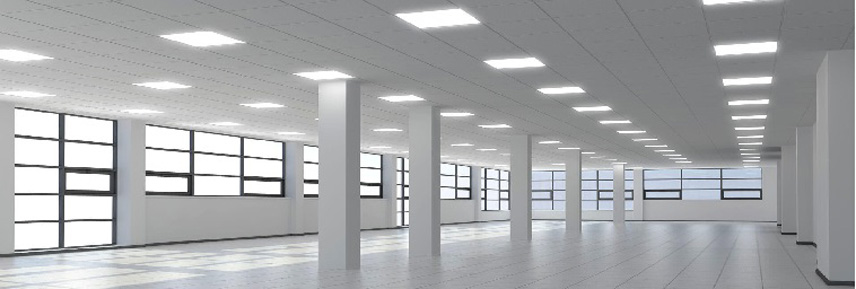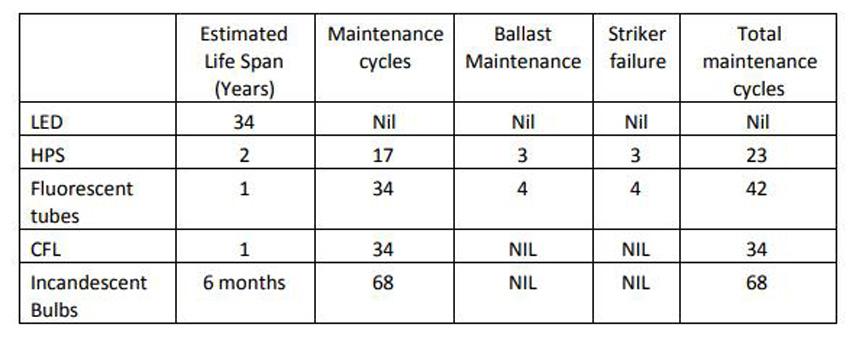The light-emitting diode (LED) is one of today's most energy-efficient and rapidly-developing lighting technologies. Quality LED lighting last longer, are more durable, and offer comparable or better light quality than other types of lighting. LED lighting are at the forefront of the new trend in lighting technology. They are highly efficient and have many other energy-saving benefits, especially when used around the home. Domestic lighting technology has progressed rapidly in recent years becoming an essential part of our advanced world. The newest technology that is available to us at the moment is LED lighting. A Light Emitting Diode (LED) is a type of semiconductor device that emits light rays when electric current is passed through it. This technology has been around for years, but only recently has it been harnessed to provide lighting solutions for the home. LED lighting have been widely used for some time now as LED street light, LED high bay light, LED panel light and LED flood light.

How LED Lighting are Different?
LED lighting is very different from other lighting sources such as incandescent bulbs and CFLs. Key differences include the following:
1.Light Source: LED lighting are the size of a fleck of pepper, and a mix of red, green, and blue LEDs is typically used to make white light.
2.Direction: LED lighting emit light in a specific direction, reducing the need for reflectors and diffusers that can trap light. This feature makes LED lighting more efficient for many uses such as recessed downlights and task lighting. With other types of lighting, the light must be reflected to the desired direction and more than half of the light may never leave the fixture.
3.Heat: LED lighting emit very little heat. In comparison, incandescent bulbs release 90% of their energy as heat and CFLs release about 80% of their energy as heat.
Energy Saving
We shall look into the energy saving potential and productivity gains from LEDs in separate
white papers. Here we shall limit ourselves to stating that LEDs are the most energy efficient
technology around. They consume 10 times less energy than incandescent bulbs and 3 times less
energy than fluorescent tubes for producing comparable results.
Led Lighting is a highly energy efficient lighting technology, and has the potential to fundamentally change the future of lighting in the world. Residential Led Lighting -- especially Fanguang Lighting products -- use at least 80% less energy, and last 25 times longer, than incandescent lighting.Widespread use of LED lighting has the greatest potential impact on energy savings in the United States. By 2027, widespread use of Led Lighting could save about 348 TWh (compared to no LED use) of electricity: This is the equivalent annual electrical output of 44 large electric power plants (1000 megawatts each), and a total savings of more than $30 billion at today's electricity prices.

Quality Lighting for Home or Business
Uniform lighting throughout your property. LED lighting does not dim or colour change through its effective life unlike the deterioration of metal halide lighting, especially evident in the retail environment.
LED lights are at full brightness as soon as they are turned on. Metal halide lights take some time to warm up to operating temperature.
No cooling down and re-starting lag time following power disruptions. LED lights operate at full capacity when switched on, unlike metal halide lamps that when tripped off, require a cool down period before coming back on again.
Many can be retro fitted in current fittings or ceiling spaces. The new LED tube light never flicker and can be dimmed and will fit into the standard fluoro fittings.
LEDs are directional, focusing light in ways that are useful in homes and commercial settings. They emit light in a specific direction, reducing the need for reflectors and diffusers that can trap light. This feature makes LEDs more efficient for many uses such as recessed downlights and task lighting. With other types of lighting, the light must be reflected to the desired direction and more than half of the light may never leave the fixture.
LEDs are a coloured light source and are designed to produce white light using a number of methods. As a result, they can actually produce white light in a number of “shades” or “colour temperatures” just like a CFL or fluorescent tube – from warm-white (similar to regular incandescent and halogen lamps, 2700 to 3000 Kelvin) to cool-white (around 4000 Kelvin) or bluish white (daylight, 5000 or more Kelvin).
From traffic, street, car park lights and vehicle brake lights to TVs and display cases, LEDs are used in a wide range of applications because of their unique characteristics, which include compact size, ease of maintenance, resistance to breakage, and the ability to focus the light in a single direction.
Maintenance Cost Components
Maintenance savings stem from the following
1) Cost of time to report light outage
2) Cost of material for repairing nonfunctional lights
3) Labor costs for the replacement of bulbs/ ballast/ striker etc.
Maintaining outdoor lighting is usually more expensive primarily because each visit needs a
team of workers equipped with tall ladders or cherry pickers and U haul trucks. In the case of
streetlights the team must contend with traffic and choose an off peak time for repairs.
The city of Ann Arbor estimated the cost labor and equipment for each maintenance visit to be
$211. They estimated this cost for ten foot high lights. The cost for higher streetlights and car
parking lights and high bays can be reasonably be expected to be similar. For typical office lights
the cost would be close to $ 50.
Once the bill of materials and the relevant labor charges are in place a simple spread sheet
reveals the potential maintenance savings with LED technology.
 The table above shows the potential savings of a single LED bulb as opposed to other lighting
The table above shows the potential savings of a single LED bulb as opposed to other lighting
options. There are two things about the table above that must be kept in mind
1) The table looks at only the maintenance savings of Led lights and it does not include
savings from energy efficiency, reduced airconditioning bills or disposal costs for
mercury containing lighting products.
2) Unlike Fluorescent tubes LEDs are scalable. Thus a single LED device can replace a 46
tube high bay fixture. In such cases the maintenance costs of a single high bay fixture will
be 36 times that of a single fluorescent tube and the gains from using LED technology
will be even more significant.

LED advantage
Light Emitting Diodes last 50,000 to 100,000 hours and they employ neither ballasts nor strikers.
The result is dramatically lower maintenance needs. When considering the maintenance costs
arising from a particular lighting option one must factor in the maintenance requirements arising
from system characteristics. These include vibrations, general environmental conditions, ballast
life, bulb life and incidence of striker failure. The life span of different lighting options and
maintenance needs are summarized in the table below.
 LED lighting future
LED lighting
LED lighting future
LED lighting is currently available in a wide variety of home and industrial products, and the list is growing every year. The rapid development of LED technology leads to more products and improved manufacturing efficiency, which also results in lower prices.
Fanguang Lighting,is China professional
Led Lighting Manufacturer. If you just right looking for Led Lighting,pls no hesitate to call us or email us today!
Email:
[email protected]


 The table above shows the potential savings of a single LED bulb as opposed to other lighting
The table above shows the potential savings of a single LED bulb as opposed to other lighting
